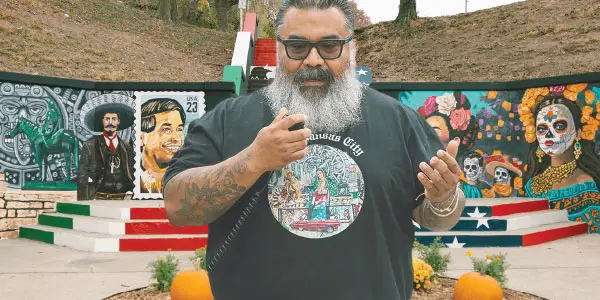
Cuando se decidió recientemente que el U.S. Army Corps de Ingenieros desviara el controvertido Dakota Access Pipeline, los nativos americanos y otros manifestantes que habían luchado para salvar terrenos sagrados y una importante fuente de agua lo consideraron una victoria.
La lucha, sin embargo, no se ha ganado. Los manifestantes continúan sus esfuerzos para preservar todas las tierras de las consecuencias dañinas de la finalización del oleoducto.
“Inicialmente lo tomamos (el reencaminamiento) como una buena noticia,” dijo Sue Cavanaugh, administrador del grupo público de Facebook Kansas City Stands con Standing Rock-We Care About Our Missouri River. “Quiero decir, estábamos escépticos. Yo no quería saltar demasiado rápido para celebrar por todo lo que ha sucedido. Cómo resultó, no fue un éxito tan grande como pensábamos que iba a ser.”
Los planes todavía están en las obras para tener el oleoducto de 1,172 millas de largo completado bajo el Río de Missouri. Según Cavanaugh, la pregunta no es “si” el oleoducto se romperá bajo el río, es “cuándo.”
“Finalmente se romperá porque hay tanta fracking en este país y tantos terremotos,” dijo Cavanaugh. “Ha habido – ni siquiera sé lo que el número total es hasta ahora – (de acuerdo a) mi último chequeo de Oklahoma sólo este año, 2016, han tenido más de 900 terremotos debido a todos los fracking.”
No hay planes para los campamentos de protesta en la reserva indígena de Standing Rock, que han atraído la atención de los medios de comunicación a la cuestión del oleoducto, para dejar Standing Rock, según Cavanaugh. Por el contrario, con el presidente electo Donald J. Trump programado para tomar el cargo en enero de 2017, los manifestantes esperan que habrá más luchas para superar; por lo tanto, se están juntos para enfrentar obstáculos potenciales.
“Nuestras posibilidades de terminar el oleoducto una vez que él (Trump) entre a la oficina … (son) pocos a ninguno,” dijo ella.
Kansas City Stands con Standing Rock tendrá eventos para continuar sus esfuerzos para aumentar el conocimiento de la tubería y recaudar dinero para suministros médicos y otras necesidades para aquellos que continúan protestando en los campamentos de Standing Rock.
Para obtener más información sobre el movimiento de protesta, visite la página de Facebook Kansas City Stands with Standing Rock-We Care About Our Missouri River.
__________________________________________________________________________________________________________
Struggle against Dakota Access Pipeline continues
By Katherine Diaz
When it was recently decided that the U.S. Army Corps of Engineers would reroute the controversial Dakota Access Pipeline, Native Americans and other protesters who had fought to save sacred grounds and a major water source considered it a victory.
The fight, however, hasn’t been won. Protestors are continuing their efforts to preserve all lands from the harmful consequences of the pipeline’s completion.
“Initially we took it (rerouting) as good news,” said Sue Cavanaugh, administrator for the Facebook public group Kansas City Stands with Standing Rock-We Care About Our Missouri River. “I mean, we were skeptical. I didn’t want to jump in too quickly to celebrate because of everything that has happened. As it turned out, it wasn’t as big a success as we thought it was going to be.”
Plans are still in the works to have the 1,172-mile-long pipeline completed under the Missouri River. According to Cavanaugh, the question is not “if” the pipeline will break under the river, it’s “when.”
“It will eventually break because there is so much fracking in this country and so many earthquakes,” Cavanaugh stated. “There have been – I don’t even know what the total number is up to now – (according to) my last check of Oklahoma alone this year, 2016, they’ve had over 900 earthquakes because of all the fracking.”
There are no plans for protest camps at the Standing Rock Indian Reservation, which have drawn media attention to the pipeline issue, to leave Standing Rock, according to Cavanaugh. On the contrary, with President-elect Donald J. Trump scheduled to take office in January 2017, protestors expect there’ll be more struggles to overcome; therefore, they’re sticking together to confront potential obstacles.
“Our chances of ending the pipeline once he (Trump) gets into office … (are) slim to none,” she said.
Kansas City Stands with Standing Rock will hold events to continue its efforts to increase awareness of the pipeline, and raise money for medical supplies and other necessities for those who continue to protest at the camps at Standing Rock.
For more information about the protest movement, visit the Facebook page Kansas City Stands with Standing Rock-We Care About Our Missouri River.









